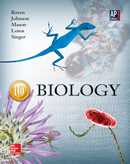1 A) Diffusion. B) Facilitated diffusion. C) Osmosis. D) Bulk transport. E) Active Transport. 2 A) Diffusion. B) Facilitated diffusion. C) Osmosis. D) Bulk transport. E) Active transport. 3 A) It serves for cell-to-cell recognition. B) It stabilizes the inner face of the membrane. C) They provide passage for substances and information to the cell's interior. D) It is a member of the flexible matrix which increases the membrane's ability to act as a barrier. E) All of the above are equally likely roles. 4 A) Fatty acids form ionic bonds with adjacent molecules in the plane of the membrane. B) Fatty acids have intense Van Der Waals interactions with other fatty acids. C) Water molecules form hydrogen bonds with the polar "heads" of the phospholipid molecule. D) Fatty acids' ester linkages to glycerol provide hydrogen bonding just under the polar "head". E) They attract half the amount of water that the polar heads do, thereby giving them room to "stick together". 5 A) The contractile vacuole will pulse more quickly. B) The contractile vacuole will pulse more slowly. C) There will be no change in the activity of the contractile vacuole. D) The cell will enlarge. E) The cell will shrink. 6 A) Diffusion of the cotransported materials will increase. B) Transport of the specific substance would cease. C) Phagocytosis will take over the task of transporting material. D) All of the above will occur. E) None of the above will occur. 7 A) Pinocytosis is possible in leukocytes (white blood cells), while phagocytosis is not. B) Pinocytosis occurs in eukaryotes, while phagocytosis occurs in prokaryotes. C) Pinocytosis is more specific in the substances it accumulates than phagocytosis. D) Phagocytosis is driven by active transport, while pinocytosis uses diffusion. E) Pinocytosis is primarily involved with engulfing nutrients in fluid droplets. 8 A) are dissolved in the water of the cell. B) are totally surrounded by membrane proteins in a "sandwich." C) encircle the cell in a double layer. D) have their nonpolar regions facing the cell exterior. E) have phosphates ionically bound to polar lipids. 9 A) is readily permeable to large, polar molecules. B) is entirely hydrophobic. C) is entirely hydrophilic. D) acts as a scaffold for various cell-surface markers. E) is made up of polymerized amino acids. 10 A) They all extend from one side of the membrane to the other. B) Some serve as channels for ions to cross the membrane. C) Many are free to migrate laterally within the membrane. D) Their position in the membrane is determined by their tertiary structure. E) Some play roles in cell identification. 11 A) diffuse into the cell less than out of the cell. B) diffuse out of the cell less than into the cell. C) diffuse into and out of the cell at the same rates D) not diffuse either in or out of the cell. E) dissolve into the plasma membrane. 12 A) Endocytosis brings large macromolecules, large particles, small molecules and small cells into the eukaryotic cell. B) In endocytosis, the plasma membrane invaginates around materials from the environment, forming a small pocket. C) Phagocytosis is a type of endocytosis. D) Endocytosis involves the discharge of material from vesicles at the cell surface. E) Pinocytosis is a form of endocytosis that brings in small dissolved substance or fluids. 13 A) they have different energy requirements. B) the use of proteins as carriers. C) the way they carry solutes in different directions. D) that active transport is only utilized when the cell is actively dividing. E) they differ in their dependence on the solubility of the solute in lipid. 14 A) generate ATP. B) are based on passive movement of sodium ions. C) include the passive movement of glucose molecules. D) use ATP directly. E) can move solutes against their concentration gradients. 15 A) The membrane exists as a liquid at regular body temperature, but has small regions of solidity to support it. B) The phospholipids can move laterally within the plane of the membrane, and proteins are embedded within it to give it special functions. C) Proteins provide flexibility within the rigid phospholipid bilayer. D) It refers to the liquid lipid sheet which was "painted" with a stabilizing mosaic of protein on its outer and inner surfaces. E) All of the above are valid reasons for the name of the model.





